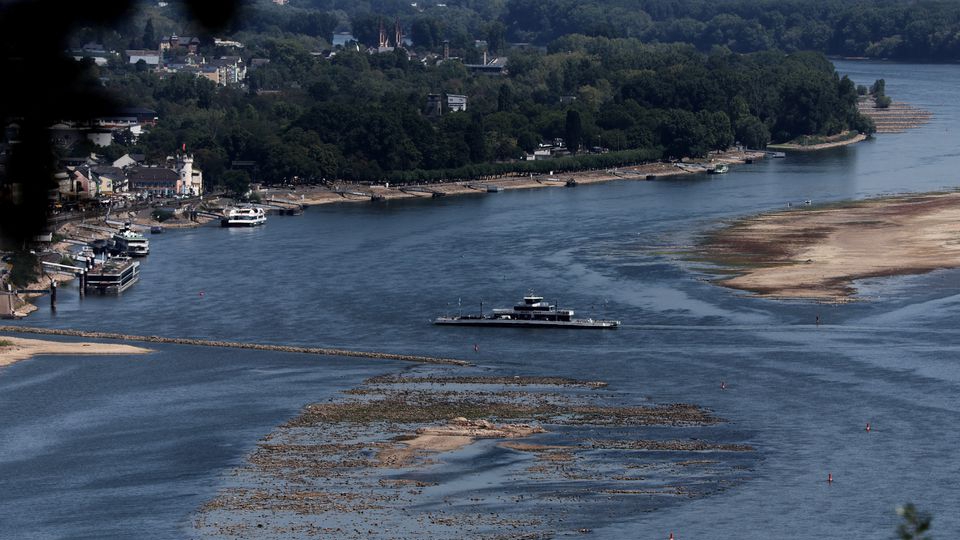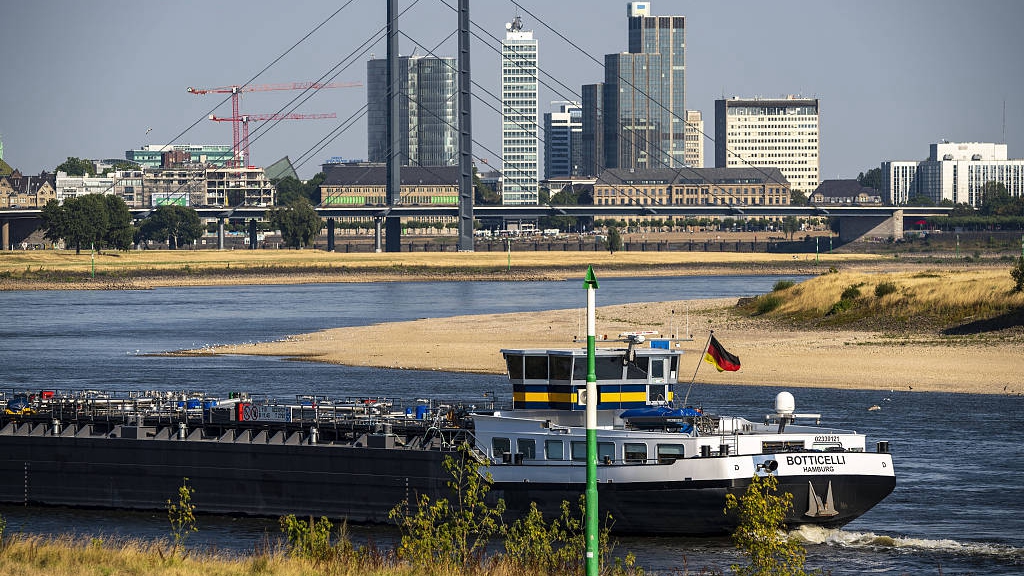
A ferry cruises past the partially dried riverbed of the Rhine River, Bingen, Germany, August 9, 2022. /Reuters
A ferry cruises past the partially dried riverbed of the Rhine River, Bingen, Germany, August 9, 2022. /Reuters
Water levels at the Rhine River, a major transport artery in Europe, is estimated to drop below a critical depth over the weekend, threatening to further compound the region's energy woes.
The water level in the Kaub, a common reference point in the Rhine, will drop to as low 35 centimeters on August 15, estimates from the German Federal Waterways and Shipping Administration showed on Friday. Most barges require water levels above 40 cm to travel.
Flowing from the Swiss Alps to the North Sea via Germany's industrial heartlands, the Rhine is a major route for products ranging from grains, chemicals to coal.
In Germany, scant rainfall this summer has drained the water levels of the Rhine since July, hampering shipping and pushing up freight costs. The summer heatwave has also strangled shipping in other European waterways.
"Normally you have more than two meters under the ship but now you only have 40 cm in some places," Peter Claereboets, the captain of Servia, a 135-meter vessel navigating the Rhine, told Reuters.
"And then for us, the challenge is to get past those points without touching, without damaging the ship," he said.
"Because of the low water levels, the sailing route gets narrower, and we actually start traveling like trains, in a convoy," he added.
Other boats, unable to cope with shallower waters, have stopped sailing altogether.
Freight charges on the Rhine have risen to around 110 euros ($112) per tonne from around 20 euros in June for a liquid tanker barge.

A barge in front of the Rhine Kneibrücke Bridge near Düsseldorf, Germany, August 11, 2022. /CFP
A barge in front of the Rhine Kneibrücke Bridge near Düsseldorf, Germany, August 11, 2022. /CFP
Credit rating agency Moody's said the low Rhine water levels will increase costs for chemicals companies, particularly those with production facilities on the upper Rhine, and could lead to production cuts.
The situation has prompted comparisons with 2018 when Rhine levels also plunged.
"I think it's more dangerous this time because the supply situation is tight anyway and the coal-fired power plants in particular, which are extremely important for generating electricity, are likely to be hit harder," said Jens-Oliver Niklasch, an economist at LBBW (Landesbank Baden-Württemberg).
Coal power plants – now back in fashion as an alternative to Russian gas supplies – face supply shortages with boats unable to take on enough coal.
The low water levels make it more costly to get fuel from the seaborne market to central and eastern Europe, said Toril Bosoni, head of the International Energy Agency's oil market division, in a Bloomberg interview on Thursday.
The impact of low water levels could linger till the end of the year for some countries, she added.
(With input from Reuters)
Read more:
Behind the energy crisis: Is Europe too dependent on America?

